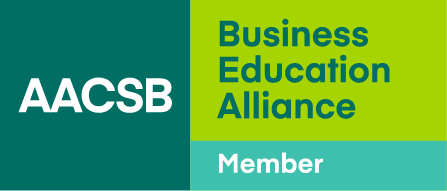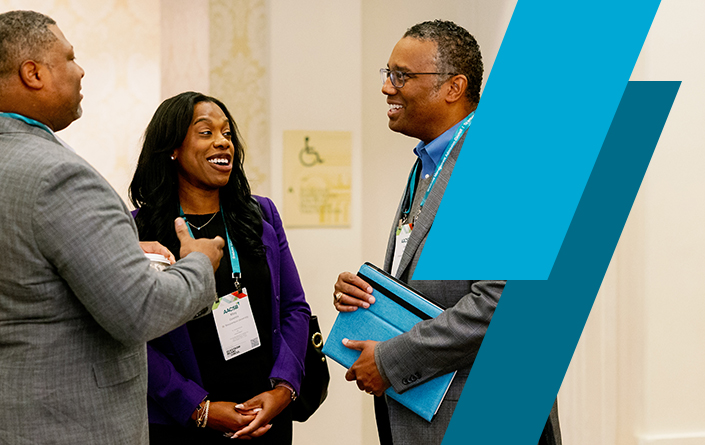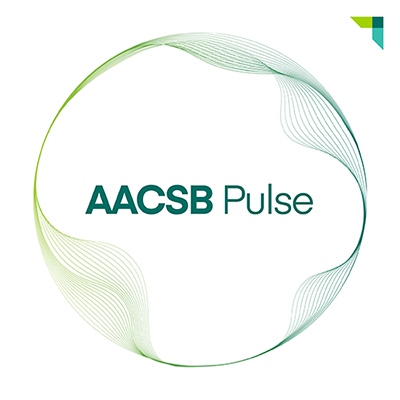The Grade Debate: Is There a Better Path Forward?
- Traditional letter grades have many limitations: They are awarded inconsistently, do not effectively measure learning, and are poor predictors of job success.
- Instead, schools could provide students with opportunities to take on real-world projects, then assess how well students develop skills such as leadership and critical thinking.
- Employers will be more receptive to a new assessment system if schools invite them to participate in the process, create portable credentialing systems, and close the loop by acting on feedback.
In a March 2025 opinion piece in The Washington Post, best-selling author Daniel Pink argues for the elimination of letter grades in higher education, highlighting flaws in how we measure learning. Pink points out that grade inflation has eroded the credibility of the traditional A-to-F scale, particularly at elite universities, where A grades are awarded more than 60 percent of the time.
His argument that grades have become the goal rather than a tool resonates with many educators who have seen students focus more on grades than on genuine understanding. However, his proposed solution of eliminating grades overlooks a more promising alternative: rethinking assessment.
In fact, the best path forward for higher education could be robust assurance of learning (AoL) frameworks that evaluate experiential learning. Such an approach could work particularly well in management education, which promotes authentic learning and workforce readiness, while maintaining academic rigor and integrity.
The Limitations of Traditional Grading
It’s important to first understand the shortcomings of the traditional letter grade system, which Pink identifies in his article:
- Inconsistency: Grading practices vary widely across institutions, and even among faculty members within the same department, leading to subjectivity and inequity.
- Susceptibility to Goodhart’s Law: When grades become the goal rather than a measure, they lose their effectiveness as indicators of learning.
- Focus on performance, not mastery: Students often pursue high grades by relying on short-term recall tactics but fail to build deep, transferable knowledge.
- Weak correlation with job performance: Research consistently shows that a high grade-point average is not a strong predictor of workplace success.
These criticisms are valid. But doing away with assessments altogether would eliminate an essential mechanism for feedback, growth, and accountability. Students, employers, and institutions still need to evaluate learning and progress—we just need better ways to do it.
Instead of framing the debate as a binary choice between preserving traditional grades or abandoning evaluation altogether, schools should focus on performance-based assessment rooted in experiential learning.
By completing real-world projects, students demonstrate that they can adapt to ambiguity, work collaboratively across differences, and think critically about complex challenges.
Activities such as project-based assignments, live client work, and team-based problem-solving help students develop skills such as strategic thinking, communication, resilience, teamwork, adaptability, and leadership. Today’s employers increasingly value these skills as much as or even more than they value technical expertise.
However, these capabilities are difficult to assess through traditional exams, which makes experiential learning even more valuable. By completing real-world projects with tangible outcomes, students can demonstrate that they can adapt to ambiguity, work collaboratively across differences, and think critically about complex challenges. Moreover, students leave with portfolios of work that demonstrate their abilities far more effectively than transcripts full of A’s and B’s.
The Role of Experiential Learning
When schools conduct assessments of skills, they measure the authentic application of knowledge and skills, not just the memorization of content. Administrators can use multiple strategies for assessing experiential learning:
- Competency-based credentialing. Students demonstrate mastery through applied projects and outcomes.
- Live client engagements. Students work with external partners on real-world challenges and receive feedback that validates their skills, giving them portfolios of experience to showcase after graduation.
- Oral examinations. Students defend their understanding and decision-making processes in real time, highlighting their critical thinking and communication skills.
- Peer and self-assessments. Students use structured self-evaluations and peer feedback to gauge their self-awareness, collaboration skills, and emotional intelligence.
Such assessment methods prepare students for the realities of professional life, where learning is ongoing, messy, and complex—not neatly captured by a final exam.
To conduct effective experiential assessment, educators can embrace six key standards identified in research from the Leaders in Experiential Project-Based Education (LEPE) initiative:
- Design tailored learning outcomes. Align programwide objectives with individualized student goals to promote personal and professional growth.
- Promote meaningful reflection. Integrate structured reflection throughout the experience, not just at the conclusion of a course, to deepen learning and self-awareness.
- Provide comprehensive feedback. Gather evaluations from faculty, peers, and external partners to provide students with a 360-degree view of their performance.
- Emphasize emotional integration. Help students recognize that emotional highs and lows are part of solving real-world problems and that these emotional experiences strengthen learning.
- Conduct multidimensional evaluation. Assess students across cognitive, affective, and behavioral dimensions to gain a holistic picture of their knowledge, attitudes, and skills.
- Strive for continuous improvement. Use assessment data to improve courses, projects, and student learning.
By employing these standards, business schools can create more meaningful assessments that support real development.
Seeking Employer Participation
Of course, companies often consider students’ grade point averages when interviewing new graduates, so business schools must engage with recruiters to ensure that any new evaluation framework translates into the hiring marketplace. Three strategies will lead employers to accept a new assessment system more quickly: asking them to participate in assessment, creating portable assessment systems, and closing the loop.
Many companies already actively participate in assessment activities, using them as formal or informal recruiting tools to preview talent before acting on hiring decisions. But their input can be even more valuable if the school invites them to provide standardized feedback using shared rubrics and integrates that feedback meaningfully into the assessment process.
Business schools must engage with recruiters to ensure that any new evaluation framework translates into the hiring marketplace.
These client evaluations will become even more useful when students compare them to their own self-assessments. Faculty can facilitate structured reflection sessions where students analyze company feedback, identify patterns and gaps, and develop action plans for improvement. These processes mirror professional development practices in the workplace, making the assessment experience itself a valuable preparation for career success.
To engage in self-reflection, students should take three steps:
- Prepare. Students document their learning objectives, assess their readiness, and identify necessary resources before beginning the experience.
- Engage. Students track how they adapt to challenges, respond emotionally to situations, and apply classroom knowledge in the workplace.
- Reflect. After completing their projects, students analyze their performance against objectives, identify key learnings, and plan how to apply insights to future professional situations.
This strategy creates consistent documentation across different experiences. It also demonstrates to employers that students have developed the metacognitive skills that companies value.
Focusing on Credentials
Another way schools can win companies over to new assessment frameworks is to create portable credentialing systems that capture the full spectrum of capabilities students have developed through experiential learning. Unlike traditional transcripts with letter grades, these systems can document specific competencies across cognitive, affective, and behavioral domains.
Such credentials might include competency badges that verify mastery of specific skills, project portfolios that showcase applied problem-solving abilities, performance assessments that evaluate emotional intelligence and leadership capabilities, and client testimonials that validate professional readiness.
These credentials also translate academic experiences into workplace-relevant terminology. For example, when schools organize their new assessment efforts around the LEPE standards mentioned above, they help students cultivate the skills employers value.
Tailored learning outcomes encourage students to be adaptable and self-directed as they adjust their approaches in response to clients’ emerging needs. Meaningful reflection builds emotional intelligence and self-awareness as students conduct structured analyses of team interactions and overall performance. Comprehensive feedback helps students become more receptive to criticism and develop growth mindsets. Emotional integration fosters resilience and stress management capabilities as students navigate the challenges of real-world problem-solving. And multidimensional evaluation cultivates systems thinking and contextual intelligence by requiring students to consider diverse perspectives.
By explicitly connecting LEPE standards to workplace competencies, business schools can show employers how assessments can better predict job performance.
Incorporating Feedback
Schools can also help corporate recruiters understand the value of experiential learning assessments by closing the loop in ways that show they value employer input. They can do this through two specific actions:
Creating forums for ongoing dialogue. Regular roundtable discussions between academic leaders, corporate recruiters, and alumni can facilitate shared understanding of assessment practices. In these forums, employers can describe which evolving skills they need, and educators can explain how experiential assessment encourages students to develop those capabilities.
By collecting longitudinal data on how graduates perform in the workplace, business schools can refine their assessment frameworks to better align with professional demands.
Researching and disseminating outcomes data. Business schools should systematically track and publish data on the correlation between performance in experiential learning assessments and subsequent career success. This evidence-based approach will build confidence among recruiters and corporate partners.
By collecting longitudinal data on how graduates perform in the workplace, business schools can continuously refine their assessment frameworks to better align with professional demands. This commitment to improvement ensures that experiential assessment remains relevant and valuable to all stakeholders.
Moving Forward
Pink’s critique rightly urges higher education to rethink outdated structures. But some form of assessment is necessary to preserve the rigor and accountability of higher education. Instead of relying on traditional grading systems, business schools can create multidimensional assessment frameworks that lead to more meaningful learning experiences, strengthen the link between education and career success, and reinforce institutional credibility.
This evolution requires intentionality. Schools must train faculty in experiential learning assessment tools and methods, seek external partnerships that lead to client-based projects, and undertake curricular redesigns that prioritize applied learning over rote recall. Yet the benefits are profound. Students have a clearer sense of their capabilities and career directions, employers gain more capable hires—and business schools reaffirm their roles as 21st-century innovators, not 20th-century relics.
Management education has always been about preparing students to navigate uncertainty, mobilize people, and solve complex problems. By embracing experiential learning assessment tools and methods, business schools will not only stay relevant, but also elevate their impact in a world hungry for leadership grounded in real capability.
It is time to move beyond debating whether grades should stay or go. The future belongs to those willing to rethink assessment itself and to do the harder, but ultimately more rewarding, work of building evaluation systems that truly measure what matters.
As Pink concludes, “If we’re serious about preparing young people for the complexities of the 21st century, a radical shake-up of higher ed is in order.” On that point, we wholeheartedly agree.
The real shake-up isn’t in eliminating evaluation. It’s in finally making it meaningful.






